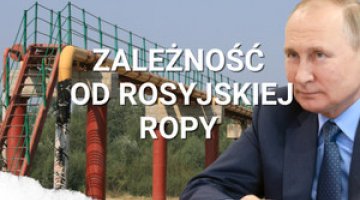Analyses
China’s interest in investing in South-Eastern Europe still growing
On 19 October the Chinese corporation China Guangdong Nuclear Power Group entered into an agreement for access to confidential information concerning the development of the Cernavoda nuclear power plant in Romania. During that same week, two Chinese companies,CEE and SEC, concluded initial agreements for the development of the Nikola Tesla power plant and the modernisation of a hard coal mine in Serbia. Although it is still uncertain whether the Chinese companies will become engaged in the two investments, these moves are examples of the increasing activity from Chinese investors in South-Eastern Europe which has been observed since the economic crisis at the end of 2008. The decreasing dynamics of Western capital influx and the very favourable disposition of the governments in this region towards Chinese investments both contribute to this process. Greece and Hungary are also increasingly interested in close co-operation with China. It is difficult to estimate at the present stage whether all this will bring about a significant economic presence of China in this region.
The crisis has held back Western investments
The global economic crisis caused a deep recession (low economic growth at present), a significant decrease in the trade exchange and an increase in unemployment in South-Eastern European countries. Their fiscal situation deteriorated, as well. Some countries from this region had to apply to international financial institutions for extra funding (Romania, Serbia, Bosnia and Herzegovina and Macedonia). The main cause of the deep crisis which countries in this region encountered was the severe reduction in foreign capital influx, this being the major source of their rapid economic development before 2008. The slowdown concerned not only short-term portfolio investments but also foreign direct investments, which require longer capital engagement. The most spectacular examples of investors withdrawing included: the disengagement of GDF-Suez, Iberdrola, CEZ and RWE from the development of the Cernavoda nuclear power plant in Romania; of RWE from the construction of the Belene nuclear power plant in Bulgaria; and of CEZ from the upgrading power plant in Gacko, Bosnia and Herzegovina. The financial crisis and the perception of this region as politically unstable have also led to a significant increase in the costs of gaining capital for financing investments and servicing debts. This is seriously impeding the resolution of serious problems in these countries, which are linked to the underdeveloped transport infrastructure and electricity shortages.
China is welcome as a partner
As Western firms lost their interest in the Balkan market, the governments of the countries in this region embarked on an active search for partners in other parts of the world (China, Turkey and the Arab countries). What adds to the attractiveness of China as an economic partner is its practice of financing investments through loans granted on favourable conditions by Chinese financial institutions (long loan and grace periods and low interest rates). Chinese entrepreneurs are not as nervous as Western investors about the risk related to high corruption levels, bureaucracy and the unstable economic situation. Unlike in most EU member states, the engagement of Chinese business is not opposed by the public and entrepreneurs in this region.
The tradition of good political relations is a factor which facilitates the development of economic co-operation. This especially concerns Serbia, which signed a strategic partnership agreement with China back in 2009 and has been consistently supporting China on the international stage (boycotting the ceremony of awarding the Nobel Prize to a Chinese dissident in 2010 and the refusal to support the EU’s declarations condemning human rights violations in China). Romania is less eager to manifest its close relations with China. Bucharest avoids raising sensitive human rights issues in bilateral relations with Chinese partner. Bulgaria is using a similar strategy, as are the other Balkan states, which emphasise the need to keep ‘pragmatic’ relations with China.
The scale and the special features of the Chinese engagement
Economic co-operation between countries in this region and China is not intensive. In some countries in this region, China is ranked among the top twenty or top thirty trade partners. Investment and capital co-operation is still marginal, especially in comparison to that with partners from the West (see Appendix). The main goal of China’s investment activity before the financial crisis was to maximise trade exchange, for example by building shopping centres.
A change in the nature of China’s engagement in this region, namely the desire to enhance capital and investment co-operation, has been observed since 2009. Chinese investors are interested above all in the electric energy sector (see Appendix). The largest of the projects being implemented include the construction of the Stanari coal power plant in Bosnia and Herzegovina (it will cost US$415 million) and the modernisation of the Kostolac coal power plant in Serbia (750 million euros). Chinese companies are implementing both these investments as subcontractors and are providing them with a large amount of funding. Chinese investors are also engaged in intensive talks with the aim of joining the projects for the development of the Nikola Tesla power plant in Serbia (1.5 billion euros) and the Cernavoda nuclear power plant in Romania (4 billion euros). In both cases, Chinese engagement would mean a breakthrough, given the scale and the strategic significance of these two investments. Additionally, Chinese companies would for the first time obtain shares in the operator companies which manage these plants.
Chinese firms have also shown interest in participating in the development of transport infrastructure (the modernisation of railways and road connections). Projects of this kind are usually implemented as part of public and private partnership. However, Chinese firms have thus far taken part in only one enterprise, the construction of a bridge on the Danube in Belgrade. Chinese firms have chosen not to become engaged in the production sector despite incentives from the countries of the region. One exception is the consortium formed by China’s car market giant, Great Wall Motor, and Bulgaria’s Litex, which will start production of cars to be sold on the EU market in 2011.
Possible future developments
The small South-Eastern European countries are not overly significant from the point of view of the realisation of the Chinese global investment expansion. Nevertheless, it may be expected that Chinese investment and capital engagement will grow in this region. In addition to the economic benefits, it will also enable China to gain political influence in what are now present and future EU member states at a relatively low expense. China’s desire to improve its reliability as an investor is also not insignificant. A successful implementation of the investment projects in South-Eastern European countries (in accordance with the principles applicable in the EU, with high quality and low implementation costs) could offer China a strong argument in its relations with the EU, which is still reluctant to let in Chinese investors.
The chances that Chinese entrepreneurs will replace Western investors on a large scale in this region are low because they are focused on specific non-production sectors, and their activity is still very limited. Chinese investments are also unlikely to contribute significantly to the resolution of economic problems that the countries in this region have to cope with, such as high unemployment and low enterprise. Chinese investors have shown little flexibility in co-operation with local partners so far. Nevertheless, if the programme which envisaged the development of infrastructure and the electric energy sector is implemented with Chinese support, the countries in this region will become more attractive to investors.
Appendix
China’s capital and investment engagement in individual South-Eastern European countries
China’s capital and investment engagement in individual South-Eastern European countries
|
Country
|
Total foreign direct investments as of end of 2010[1] (million euros)
|
Total Chinese direct investments as of end of 2010[2] (US$ million)
|
The most important investments being implemented and considered
|
|
Albania
|
2,312*
|
4.4
|
- n/a
|
|
Bosnia and Herzegovina
|
4,906
|
6.0
|
Dongfang Electric Corporation:
- construction of the Stanari coal power plant (approximately US$415 million).
- participation in the construction of a water power plant (1.68 MW) is being considered
|
|
Bulgaria
|
36,172
|
16.6
|
- the construction of a car factory in Lovech was completed this year, investors: Grand Wall China and Litex (133 million euros)
– possible sale of shares in the planned Belene nuclear power plant is being negotiated (approximately 2.5 billion euros).
- intergovernmental memorandum on the modernisation of railroads and rolling stock (December 2010)
|
|
Croatia
|
25,649
|
8.1
|
No major investments
|
|
Macedonia
|
3,350
|
0.8
|
- a group of 12 water power plants on the Vardar river (approximately 1 billion euros, negotiations with China Development Bank on the financing of this project are pending)
|
|
Romania
|
49,984*
|
125.0
|
– China Town shopping centre (30 million euros), opened in 2011
– Huawei European Design Centre (approximately 200 million euros) due to be completed in 2012
– CGNPG is interested in participating in a company which is implementing the Cernavoda nuclear power plant project
(a 35-45% block of shares worth 1.5–2 billion euros);
an agreement offering access to confidential information on the development has been signed
and in October 2011 CGGC confirmed its intention to participate in the construction of the Tarniţa-Lapustest water power plant (1,000 MW capacity).
|
|
Serbia
|
15,780
|
4.8
|
– China Road and Bridge Corporation is building a bridge on the Danube in Belgrade. Investment cost: 175 million euros (85% from a loan granted by China’s Eximbank)
– the revitalisation of two energy blocks in the Kostolac coal power plant by China’s CMEC – the final phase of loan negotiations with Eximbank
– development of the Nikola Tesla coal power plant complex by Environmental Energy Holdings and the Shenzhen Energy Group – an initial agreement with no financing guaranteed.
|
|
Montenegro
|
2,766
|
0.3
|
– Sinohydro Corporation is taking part in the final phase of the tender for building a group of water power plants on the Moraca
|
* as of end of 2009




